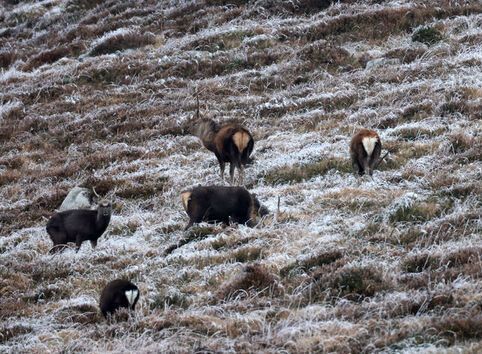Ernie O'Malley with his son Cormac at the Galway Races in 1954.
Screen Time / By Peter McDermott
Cormac O’Malley once described his father as his “torch-bearer.” Now he’s paying tribute by telling his story in monthly video installments. “Ernie’s Journey” goes back 100 years exactly to the Irish War of Independence in 1920. Already there’s been an introduction, putting IRA General Ernie O’Malley in context, followed by five numbered episodes. Each is less than 10 minutes in length.
The episodes so far have included information about the attacks on three barracks of the Royal Irish Constabulary, one in Ballytrain, Co Monaghan, in February, and two in Tipperary — Hollyford in May and Drangan in June.
The retired lawyer was in his early teens when his father died of a heart attack in 1957. He got the news at the Benedictine-run Appleforth College in England, the same secondary school his older brother by six years Cathal had attended before being “kidnapped” by his mother, to use Ernie’s word, She also brought their daughter Etain with her to the U.S.

Cormac O’Malley.
When school was out of term, Cormac lived in “safe houses” in Dublin and Mayo. The former revolutionary feared that his youngest child would be also taken by his former wife, the Connecticut-born sculptor Helen Hooker. An intense bond with and loyalty to his father endures 63 years after his death.
O’Malley studied history at Harvard, served in the U.S. navy and graduated from Columbia Law School. After a successful legal career, he returned to the academic study of history.
“Cormac O’Malley has enabled a dynamic corpus of scholarship on Ireland and on the transatlantic ties that bind Ireland and the U.S.,” said Miriam Nyhan Grey of Glucksman Ireland House, NYU, in 2017. “This is not only as exemplified through writings on his father, but more generally through Cormac’s own commitment to uncovering the complexity of Irish America.”
At that time, O’Malley had just edited his 11th O’Malley-themed book, “Modern Ireland and Revolution: Ernie O’Malley in Context” – a collection of essays by leading scholars.
Roy Foster writes of the father in the concluding essay: “What remains striking about O’Malley’s legacy is not only his creation of one of the most remarkable memoirs in Irish literary history, but also the story of the journey of a deeply original and powerful intelligence, coping with the fallout of an extraordinary youth and a saddened middle age.”
That was “On Another Man’s Wound,” which the New York Times described as "a stirring and beautiful account of a deeply felt experience,” when it was published in the U.S. in 1936.

The cover of the first American edition of Ernie O’Malley’s Irish War of Independence memoir in 1936.
His son is now going back to that “extraordinary youth” lived through troubled times. Michael Collins had heard about the medical student who walked into Dublin Castle saying he was back from the Western front and needed a weapon to defend himself from rebels. Officers there gave him a rifle. When that student, O’Malley, presented himself to Collins at Irish Volunteers HQ, he got a job as an organizer who, though based in the capital, would take assignments in an area that comprised 18 counties.
The Monaghan action was done in conjunction with another Collins lieutenant, Eoin O’Duffy. It was first time that an RIC barracks was successfully attacked and its personnel, in this case seven officers, disarmed.
Cormac O’Malley explains that 100 volunteers were usually involved in such an operation and it would happen after 11 p.m. and before dawn, hours during which the British army was not patrolling the countryside. The aim, by breaking through the slate roof and setting a fire, was to get guns and ammunition. But even the first attack in Tipperary, which saw the RIC contingent holding out, was regarded as a morale-building success. In the later attack, the RIC officers surrendered.
O’Malley talks about shifts in opinion in 1920 that allowed the IRA to shake off the influence of “the people” — by which Ernie meant the older generation of farmers not keen on letting their sons go off to fight.
With the police — a hitherto well-regarded pillar of the established order — being left in such a vulnerable position in the countryside, London responded with the Black & Tans and the Auxiliaries, as well as increased numbers of regular troops. Train drivers and dockworkers, however, were among those proving uncooperative with regard to the government’s military maneuvers. More generally, the results of the 1918 general elections began to be felt in civil society, with a new Irish establishment emerging, as seen most clearly perhaps with the operation of a republican courts system.
O’Malley intends to keep this exciting story going through the end of his father’s revolutionary career in 1924. And so, of course, he will include the Civil War, in which Ernie was to oppose Collins, O’Duffy and many other former comrades.
For Cormac O’Malley’s very accessible history of the Irish War of Independence, go to ernieomalley.com. The most recent episodes are on the home page and the rest can be found by going to the “Media & Video” section at the top. A bonus is an hour-long presentation of readings from Bloomsday 2020.








